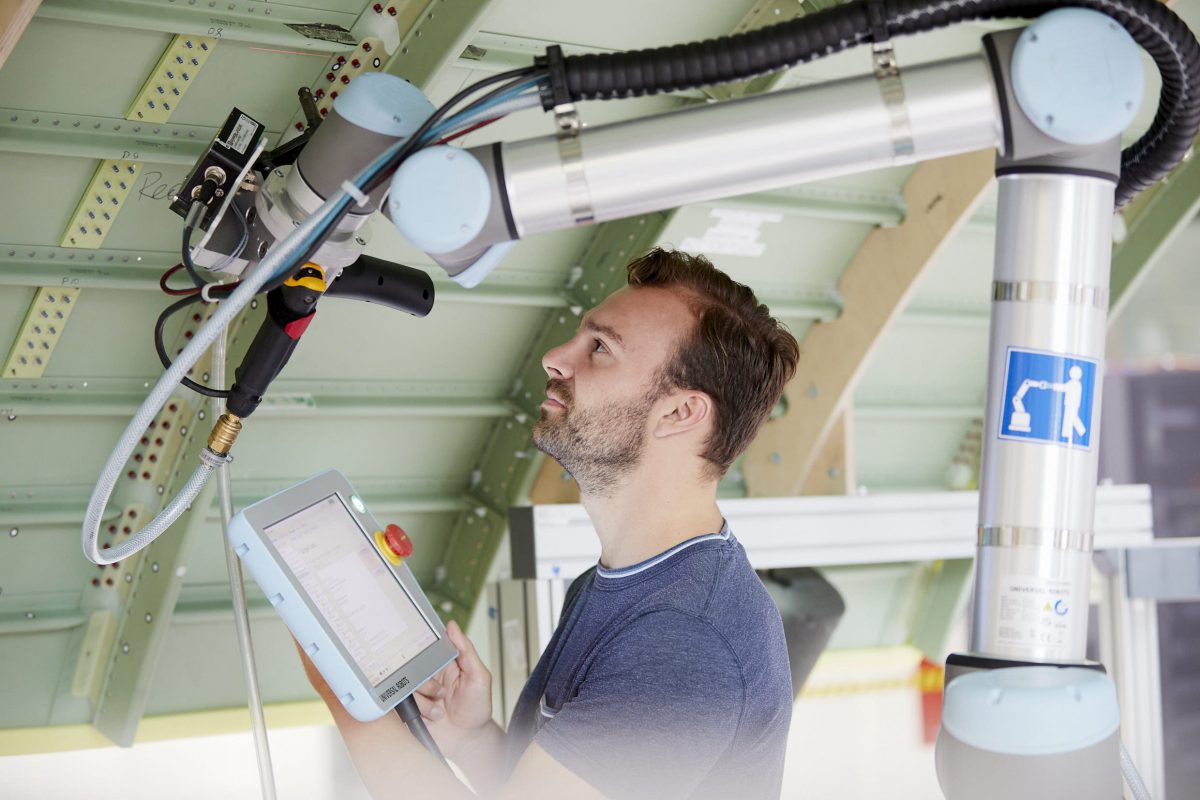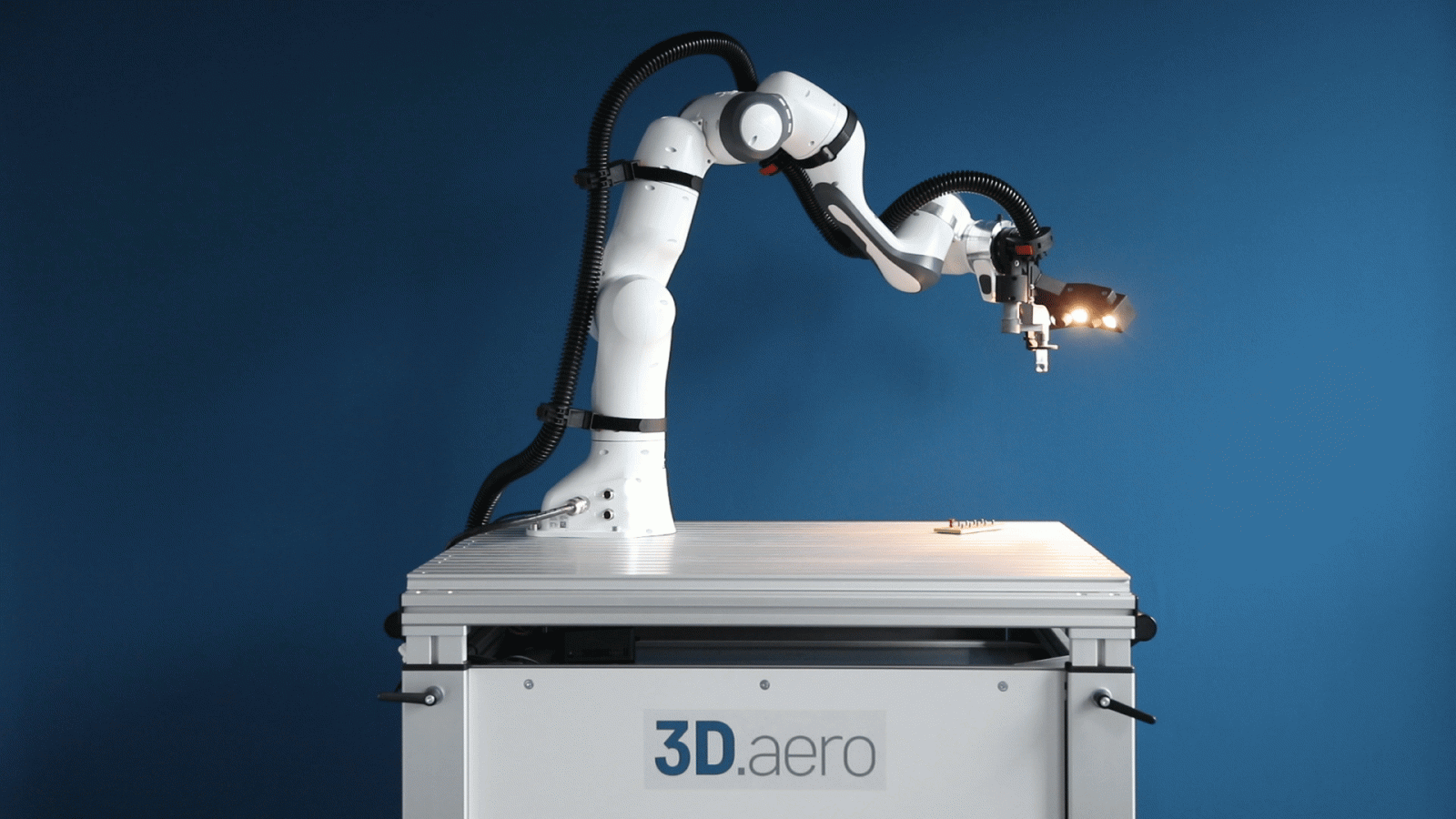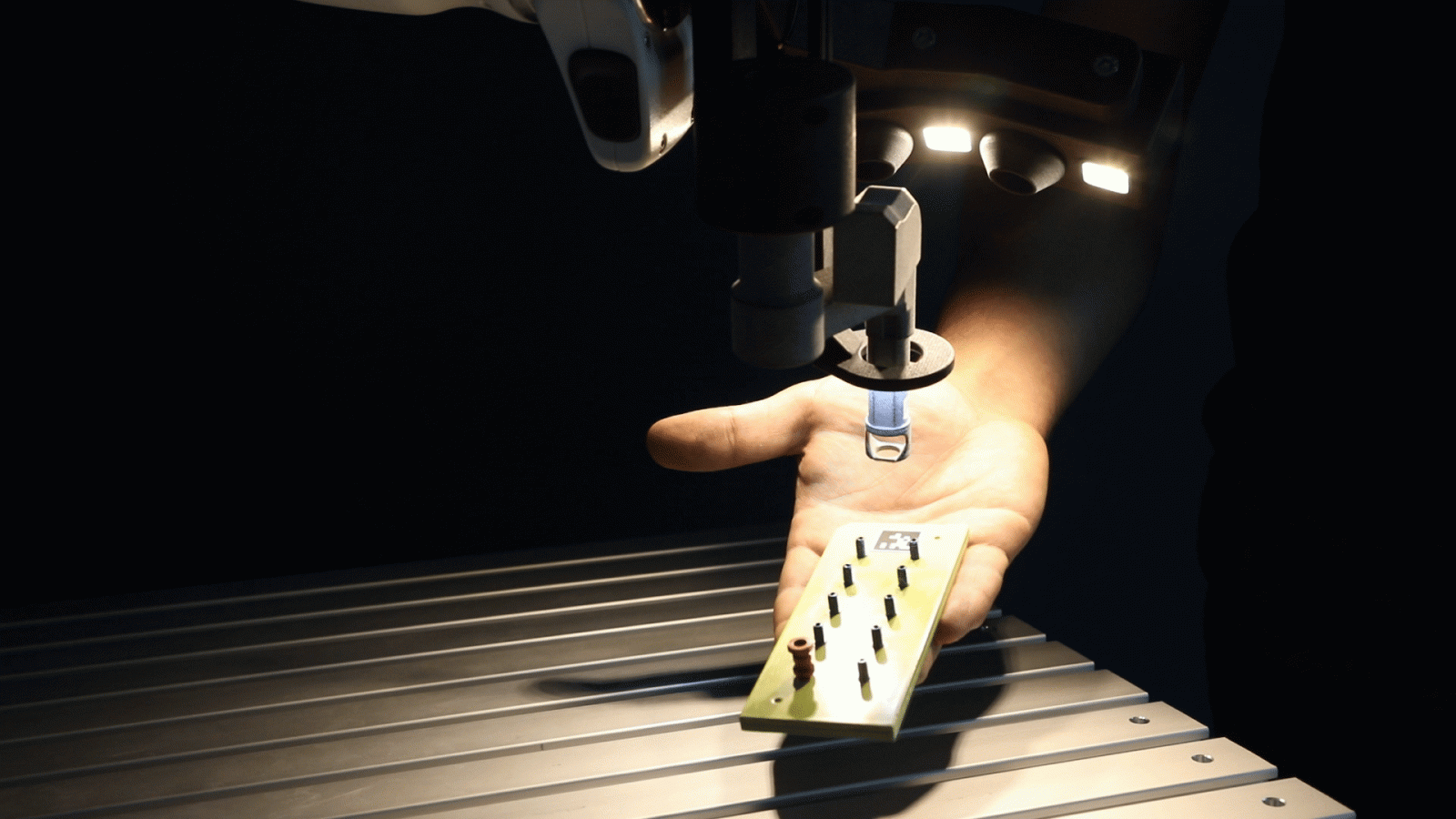Can you imagine working next to a cobot on the shop floor?
Can you imagine working next to a cobot on the shop floor?
Let us introduce you to cobots with an advanced technology concept.

Collaborating robots (cobots), which are specifically designed to share and interact with humans in their workspace, are becoming increasingly important in the course of numerous automation projects. Such a system not only has the advantage that the flexibility is significantly higher compared to special machines, but also that the costs for the small and medium series production are usually lower compared to other automation approaches. Cobots are very popular in industry as an automation tool for small and medium series production because they can usually be easily adapted to the work area, the worker and the workpiece. They are equipped with various tools such as cameras or sensors and they can be extended with complex algorithms to a Cobot platform in order to guarantee the functionalities of an automation solution to the respective process requirements.
Cobots vs. industrial robots
Collaborating robots (cobots), which are specifically designed to share and interact with humans in their workspace, are becoming increasingly important in the course of numerous automation projects. Such a system not only has the advantage that the flexibility is significantly higher compared to special machines, but also that the costs for the small and medium series production are usually lower compared to other automation approaches.
Cobots are very popular in industry as an automation tool for small and medium series production because they can usually be easily adapted to the work area, the worker and the workpiece. They are equipped with various tools such as cameras or sensors and they can be extended with complex algorithms to a Cobot platform in order to guarantee the functionalities of an automation solution to the respective process requirements.

Cobots are only as good as their technology concept
One of the keys to a successful use of a Cobot platform on the shop floor is the implementation of the correct referencing concept, which enables the Cobot to react autonomously and in real time to unpredictable external influences.
Offline referencing is one of the most common referencing concepts in industrial robotics. However, it can only be used where external influences during the work process can be excluded. In this case, the robot is always separated from the worker and the workshop by a cell and can carry out its task based on the recorded sensor data and the calculations for the initial position on the workpiece without unexpected changes in the work area. If robots with offline referencing share their work area with the worker without any separation, e.g. by a cell, the sensors cannot immediately detect sudden disturbances such as the displacement of the component or induced vibrations. As a result, the robot performs its movement on the basis of already outdated data and, in the worst case, can no longer prevent a collision with the workpiece. Industrial robots are therefore too risky to be used in production.
Fill your shop floor with human and robot workers
An innovative technology concept consisting of online referencing, machine vision and vision-based robot control (visual servoing) equips the Cobot with the necessary intelligence and sensitivity to enable human-robot collaboration in a dynamic working environment.
By including online referencing, the defined feature is localized through sensor data and based on this, the robot motion can be adapted. If, for example, the component position changes, the cobot immediately detects the external disturbance while the process is still running, corrects its movements in real time and thus prevents a possible collision with the component. This is done by machine vision and visual servoing, the vision-based robot control system, which enables the system to be much more robust, to react sensitively to the production environment and to compensate its movements even in unforeseeable situations.
Intelligent, autonomous and sensitive – the newly gained characteristics create new possibilities in the practical application of robots. The cooperation between humans and robots brings added value, especially where ergonomics in the work area is an issue or where lightweight robots are the preferred choice for space-saving reasons instead of industrial robots with a separate protection device. Cobots can thus be easily integrated into numerous assembly activities such as riveting, sealing and bin picking.

Do you have your own application in mind? Feel free to contact us!
As a joint venture between Luftfhansa Technik and Pepperl+Fuchs, we combine proven automation approaches with process know-how from the aviation industry and innovations such as AI and robotics to create advanced automation solutions. At 3D.aero, we also understand that the requirements and needs for technological solutions are as individual as the company and the processes and employees behind them. That is why we have made it to our mission to accompany our customers from the problem definition to the development of their own automation solution.
Contact us for further information. We are looking forward to your message!
